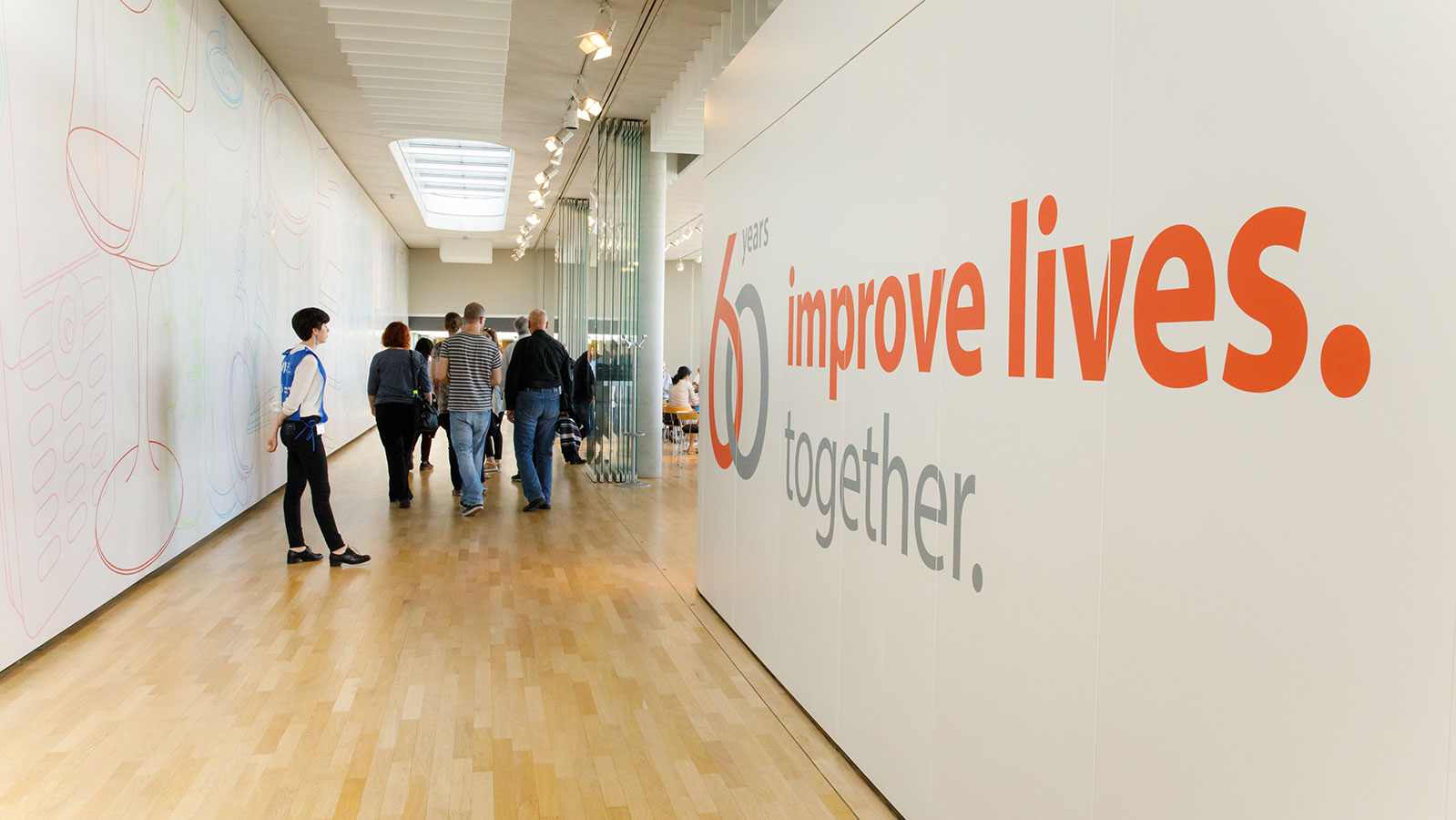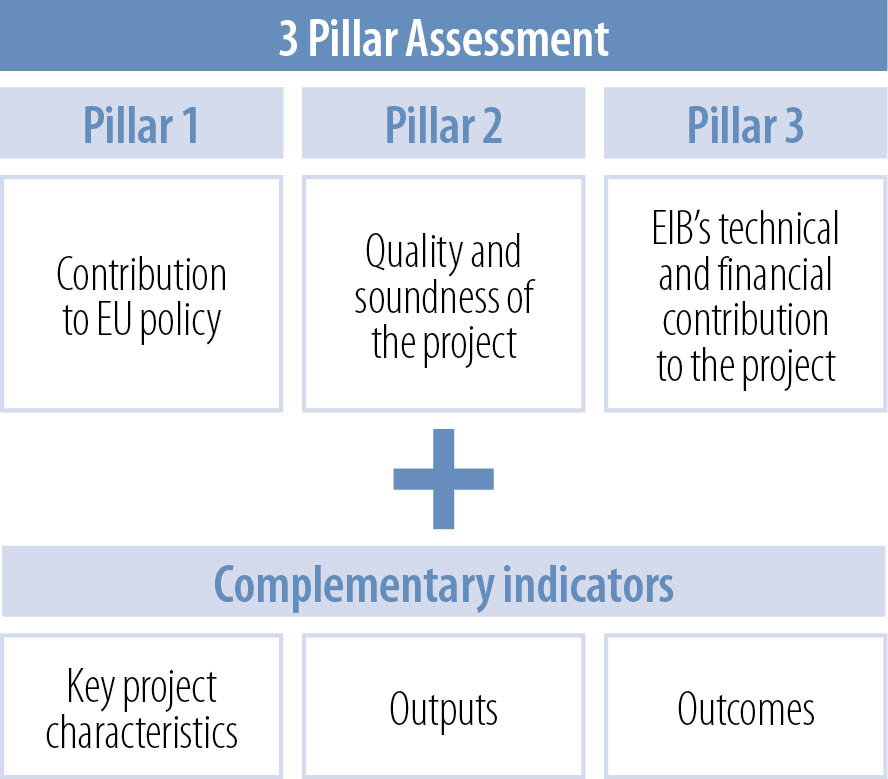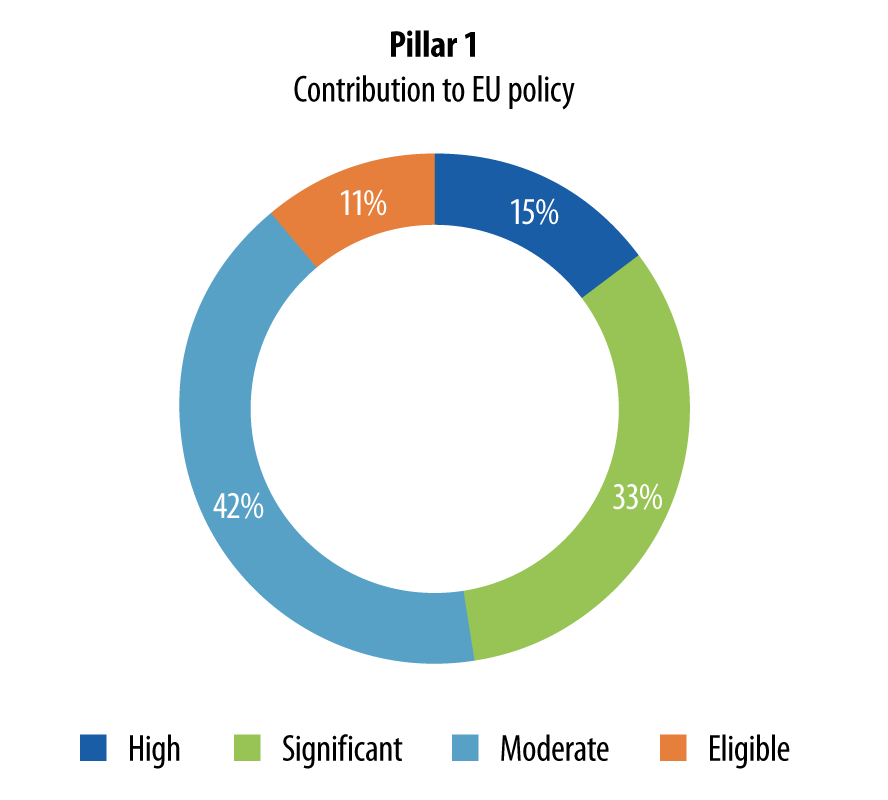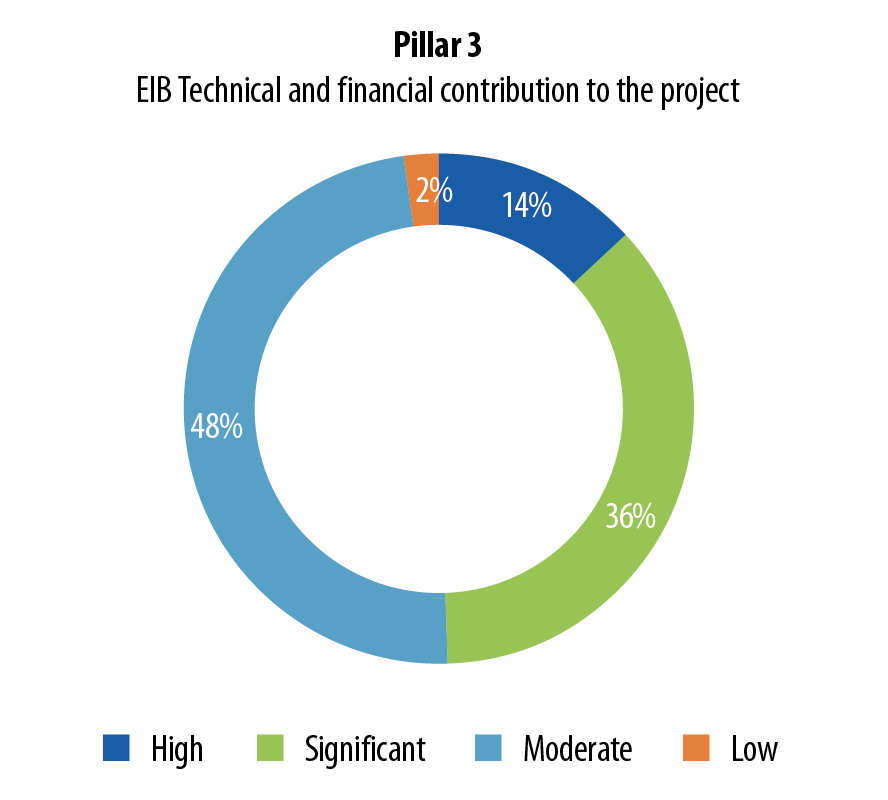Context of the EIB’s operations in 2017
The framework for the EIB’s current operations is provided by the Europe 2020 strategy, the EU’s agenda for growth and jobs. Europe 2020 highlights the need to increase productive investment levels; exploit the potential of EU funds such as structural and national funds, notably via tools such as the European Fund for Strategic Investments (EFSI); ensure that finance reaches the real economy; boost the digital economy; and transition to a low-carbon economy.

Europe 2020: five headline targets measured by the following key indicators:
- R&D - 3% of the EU's GDP to be invested in R&D;
- employment - 75% of 20-64 year-olds to be employed;
- climate change and energy sustainability - greenhouse gas emissions 20% (or even 30%, if the conditions are right) lower than in 1990; 20% of energy from renewables; 20% increase in energy efficiency;
- education - reduce the rate of early school leaving to below 10% of pupils; at least 40% of 30-34 year-olds completing third-level education;
- fighting poverty and social exclusion - at least 20 million fewer people in or at risk of poverty and social exclusion.
The Bank can use its financial resources and in-house expertise to address the first four of the Europe 2020 targets. Although the EIB cannot tackle poverty directly, it can make a contribution through the provision of support to local authorities and other agencies to improve the physical environments of communities at risk. This contribution is measured by the EIB transversal indicator dedicated to cohesion.
EIB’s policy goals
In line with the Europe 2020 strategy, the EIB has adopted four public policy goals:
- innovation and skills - helping to achieve the Europe 2020 target of 3% of GDP invested in R&D by promoting broadband, creating a single digital market in Europe, and supporting innovation. In relation to skills, the EIB provides finance to develop educational and research facilities, and to support the training of young people;
- SME and mid-cap finance - the EIB supports the development of SMEs by offering loans, guarantees and microfinance through financial intermediaries. It also supports mid-caps investing in research and product development with loans and guarantees;
- infrastructure - the EIB provides the finance needed to develop strategic transport links (including TEN-T), build the infrastructure necessary for competitive and secure energy supplies (TEN-E), and undertake urban renewal projects, including those aimed at creating smart and sustainable cities;
- environment – the EIB invests in sustainable transport (including various forms of public transport), environmental protection, the development of renewable energy, and energy efficiency.
In addition, the EIB has two horizontal, or cross-cutting, objectivestraversing the four public policy goals:
- economic and social cohesion – the EIB supports the EU objective of economic and social cohesion by financing projects in less-developed areas which contribute to reducing the disparities between the levels of development of the different EU regions;
- climate action – the EIB provides finance for climate mitigation and adaptation in all sectors, including afforestation and reforestation, which are effective means of sequestering CO2 from the atmosphere through natural fixation.
The Bank’s priorities and operational orientations are set out in a three-year rolling operational plan. The Corporate Operational Plan (COP) for 2017-19 called for the Bank to continue supporting the Europe 2020 targets for smart, sustainable and inclusive growth, with key areas of activity being:
- energy – competitive and secure supply; energy efficiency; renewable energy
- transport and mobility – energy-efficient, low-carbon and cleaner sustainable transport; strategic transport infrastructure; mobility for Europe’s cities; urban and regional development and renewal
- health
- rural infrastructure development and agri-business support
- supporting SMEs and mid-caps
- environment – water; waste; rural infrastructure
- innovation – digital technology; biotechnology; materials science; bio-economy; energy
How the EIB demonstrates value added
There are many projects that would not be able to proceed without EIB intervention, perhaps because public finances are so constrained that the necessary financing is simply not available, or because the private sector considers a project as being too risky with an uncertain payback. The Bank often supports projects of common interest to several Member States that, because of their size or nature, cannot be entirely financed by the various means available in the countries concerned. In these situations, it is likely that projects such as new transport links would only proceed in a piecemeal fashion, and possibly only over a longer period of time, without EIB involvement, delaying and reducing the scale of the economic and other impacts.
The Bank measures its success in terms of its contribution to EU policy, the quality and soundness of the projects it finances, and the technical and financial contribution it makes to each project using its Three-Pillar Assessment (3PA). Further details of the methodology are presented in Annex 1.

The charts below present the 3PA assessment of the projects supported by the EIB in 2017:
3PA ratings for the EIB’s 2017 operations



The total % does not add up to 100% due to rounding.
If the categories of ‘high’ (or ‘excellent’) and ‘significant’ (or ‘good’) are combined to simplify the picture, it becomes apparent that the EIB’s new operations in 2017 generally scored high across the three Pillars, demonstrating their alignment with the Bank’s strategy and objectives.